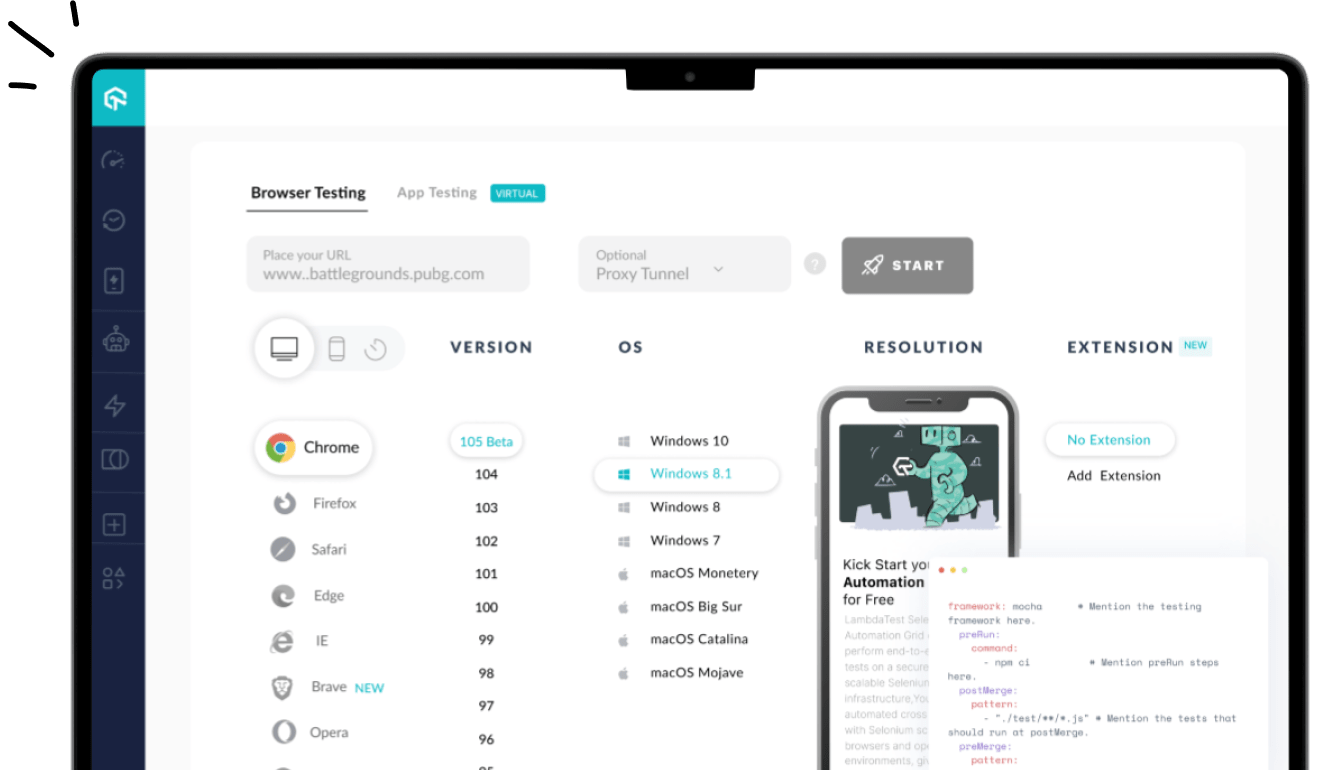AI-Powered QA: How Large Language Models Are Revolutionizing Software Testing- Part 3
Ilam Padmanabhan
Posted On: February 21, 2025
![]() 32969 Views
32969 Views
![]() 7 Min Read
7 Min Read
In the first two parts of this blog, we explored how AI, specifically Large Language Models (LLMs), are reshaping the landscape of software testing. From automating routine test generation to identifying subtle patterns that could lead to bugs, LLMs are proving to be powerful tools.
In case you haven’t had a chance to read the first two parts, here are links:
How Large Language Models Are Revolutionizing Software Testing- Part 1
How Large Language Models Are Revolutionizing Software Testing- Part 2
We also examined some real-world use cases of LLMs in testing, showcasing their potential to revolutionize how we approach quality assurance. Tools like LambdaTest’s KaneAI are here to bridge the gap—bringing the benefits of AI-native test automation while addressing the pitfalls of traditional models.
Let’s now dive into the limitations of LLMs and what QA professionals need to be aware of.But, as promising as these tools are, they aren’t without their challenges. Let’s now dive into the limitations of LLMs and what QA professionals need to be aware of.
Context and Understanding: The Semantic Mirage
Imagine an AI that explains software architecture fluently, but has no clue what it’s talking about. Large Language Models are mesmerizing, but they have a significant blind spot. They chuck out impressive-sounding software nonsense because they don’t truly understand semantics. As QA professionals, this means:
- LLMs generate test scenarios that sound right, but miss critical system dependencies.
- They fail to comprehend complex architectural relationships.
- They spew convincing-sounding gibberish because they’re experts at pattern recognition and even better at spewing words & code.
For example, a banking app’s authentication system. An LLM might create test cases that look right on the surface, but ignore critical security flow nuances that a seasoned QA expert would quickly pick up on.
Reliability and Reproducibility: The Unpredictable Variable
One of the key foundations of quality assurance is test reliability. LLMs introduce random variables:
- Hallucinations: generating plausible-sounding, but entirely fictional test scenarios.
- Non-deterministic results: the same input prompts completely different test cases.
- Inconsistent logic: test scenario generation that follows different rules each time.
Example: an LLM spits out 10 test cases for a login feature, but each set contradicts the previous ones. That’s not testing; that’s research. Inconsistent test case generation defeats the purpose of reproducible testing.
Technical and Resource Footprint: The Elephant in the Room
LLMs are not just about technical capabilities; they also introduce significant resource concerns:
- Exorbitant computational overhead for test generation.
- Higher infrastructure costs for deploying complex models.
- Energy inefficiency and wasted computing.
- Scaling problems for large, complex software systems.
- Larger context windows = higher cost and also technical limitations on how much a single session can handle
A midsized company might find that the computational load of generating full test coverage for their software blows their hoped-for efficiency gains. More data isn’t always good!
Data and Training Limitations: The Curriculum Constraints
LLMs are only as smart as their training data:
- Domain expertise requires careful, targeted fine-tuning.
- Training dataset biases are difficult to avoid.
- Nuanced industry expertise and “street hacking” knowledge is hard to capture.
- Ongoing model retraining is a complex, long-term process.
Example: trying to use a general-purpose LLM to test medical device software. It would be as useful as a stock AI because it lacks critical domain expertise that comes from years of testing medical software.
This bottleneck could be partially resolved by training the models with custom data. But that requires significant time, money, and focus and may not be possible for many organizations.
Transparency: Decoding the Algorithmic Black Box
Current AI testing tools operate with remarkable complexity but troubling opacity:
- Decision-making processes remain largely inexplicable
- Precise reasoning behind test generation is untraceable
- Accountability mechanisms for AI-generated test failures are nebulous
This lack of transparency introduces significant risks:
- Reduced confidence in testing methodologies
- Potential regulatory compliance challenges
- Increased legal and professional liability
- Erosion of trust in quality assurance processes
Once AI tools become the norm, the human understanding of the technologies become weaker.
How many would now know how the light bulb turns when you press a random switch? AI can have a similar effect where we simply take the results without having any understanding of how it arrived at the result.
And when things go wrong, who’s at fault – the AI or the human? Onto the next point!
Algorithmic Bias: The Hidden Systematic Challenge
Algorithmic bias is far more than a technical glitch—it’s a sophisticated challenge that can silently undermine testing effectiveness:
- Training datasets encode historical decision-making patterns
- AI models can inadvertently perpetuate existing organizational blind spots
- Test scenarios might unconsciously reflect embedded prejudices
In practical terms, this means AI-generated tests could:
- Systematically overlook accessibility requirements
- Create test scenarios that favor specific user demographics
- Miss critical edge cases affecting marginalized user groups
- Reproduce unintentional technological monocultures
I could go on, but the internet is full of the risks coming with the advent of AI. Let’s pay attention as our world will significantly be impacted one way or another.
The Human-AI Testing Partnership
Imagine a future where quality assurance is elevated beyond its current limitations, not by replacing human testers with AI, but by forging a powerful partnership between humans and machines. In this new world, professionals will need to adapt to roles that are:
- Savvy interpreters of AI-driven insights
- Creative testers who design new approaches
- Guardians of thorough and ethical quality
For QA professionals, this new frontier is both a daunting threat and a thrilling opportunity to redefine what testing means in the age of AI. The goal isn’t to fight the rise of AI, but to harness its power while preserving the unique value that humans bring to the testing table – nuanced judgment and real-world expertise.
The smartest approach will combine state-of-the-art technology with deep human insight – turning AI into a powerful tool that enhances, rather than replaces, the value that humans bring to the quality assurance process. As we move forward, the delicate balance between human intuition and machine intelligence will be key to shaping the future of QA.
Wrapping Up
LLMs are not a fad—they’re here to stay and are transforming the quality assurance landscape. QA teams are facing unprecedented challenges in keeping up with code volume and system complexity. The answer lies in smarter, more adaptive testing approaches, and LLMs can be a game-changer in this new world.
However, to fully realize their potential, QA teams must navigate challenges like AI interpretability, bias, and the need for human oversight. Quality assurance is at a crossroads, and the future lies in striking a balance between human judgment and AI-powered automation.
This is where AI-native solutions like LambdaTest KaneAI come into play, bridging the gap between AI-native efficiency and practical, real-world QA needs. As a GenAI-native, QA Agent-as-a-Service, KaneAI empowers teams to scale testing effortlessly, uncover hidden issues, and enhance software quality with precision. The future of QA is a team sport—those who embrace AI while maintaining human expertise will lead the way.
Got Questions? Drop them on LambdaTest Community. Visit now














